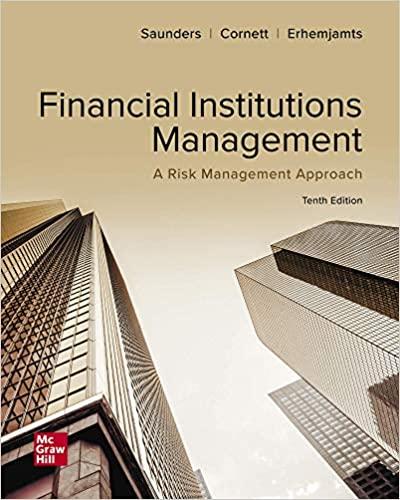Question
2. Saved Chapter Sixteen Homework G 2 1 points eBook Hint Print References Fujita, Incorporated, has no debt outstanding and a total market value of
2. Saved
Chapter Sixteen Homework G
2
1
points
eBook
Hint
References
Fujita, Incorporated, has no debt outstanding and a total market value of $408,900.
Earnings before interest and taxes, BIT, are projected to be $54,000 if economic conditions are normal. If there is strong expansion in the economy, then EBIT will be 13 percent higher. If there is a recession, then EBIT will be 21 percent lower. The company is considering a $200,000 debt issue with an interest rate of 5 percent. The proceeds will be used to repurchase shares of stock. There are currently 8,700 shares outstanding.
The company has a tax rate of 22 percent, a market-to-book ratio of 1.0, and the stock
price remains constant.
a-1. Calculate earnings per share (EPS) under each of the three economic scenarios before any debt is issued. (Do not round intermediate calculations and round your answers to 2 decimal places, e.g., 32.16.)
a-2. Calculate the percentage changes in EPS when the economy expands or enters a recession. (A negative answer should be indicated by a minus sign. Do not round intermediate calculations and enter your answers as a percent rounded to 2 decimal places, e.g., 32.16.)
b-1. Calculate earnings per share (EPS) under each of the three economic scenarios assuming the company goes through with recapitalization. (Do not round intermediate calculations and round your answers to 2 decimal places, e.g., 32.16.)
b-2. Given the recapitalization, calculate the percentage changes in EPS when the
economy expands or enters a recession. (A negative answer should be indicated by a minus sign. Do not round intermediate calculations and enter your answers as a percent rounded to 2 decimal places, e.g., 32.16.)
a-1. Recession EPS a-1. Normal EPS a-1. Expansion EPS
a-2. Recession percentage change in EPS a-2. Expansion percentage change in EPS b-1. Recession EPS
b-1. Normal EPS
B-2. Recession EPS
B-1. normal EPS
B-1. expansion EPS
B-2. Recession percentage change in EPS
B-2. expansion percentage change in EPS
2. 4) Grades for Amanda....
Sixteen Homework
M Question 6 - Chapt..
O Your Sets
O Your sets
Saved
es
Dickson Corporation is comparing two different capital structures. Plan I would result in 24,000 shares of stock and $82,500 in debt. Plan II would result in 18,000 shares of stock and $247,500 in debt. The interest rate on the debt is 4 percent.
a.
Ignoring taxes, compare both of these plans to an all-equity plan assuming that EBIT will be $85,000. The all-equity plan would result in 27,000 shares of stock outstanding. What is the EPS for each of these plans? (Do not round intermediate calculations and round your answers to 2 decimal places, e.g., 32.16.)
b.
In part (a), what are the break-even levels of EBIT for each plan as compared to that for an all-equity plan? (Do not round intermediate calculations.)
C.
Ignoring taxes, at what level of EBIT will EPS be identical for Plans I and II? (Do not round intermediate calculations.)
d-1. Assuming that the corporate tax rate is 25 percent, what is the EPS of the firm? (Do not round intermediate calculations and round your answers to 2 decimal places, e.g., 32.16.)
d-2. Assuming that the corporate tax rate is 25 percent, what are the break-even levels of EBIT for each plan as compared to that for an all-equity plan? (Do not round intermediate calculations.)
d-3. Assuming that the corporate tax rate is 25 percent, when will EPS be identical for
Plans I and II? (Do not round intermediate calculations.)
a. Plan I EPS
a. Plan II EPS
- All-equity EPS
- Plan I and all-equity break-even EBIT
- Plan II and all-equity break-even EBIT
- Plan I and Plan II break-even EBIT d-1. Plan I EPS d-1. Plan II EPS d-1. All-equity EPS
- Plan II and all-equity break even EBIT
- Plan I and Plan II break-even EBIT
- Plan I EPS
- Plan II EPS
- All-equity EPS
- Plan I and all-equity break-even EBIT
- Plan II and all-equity break-even EBIT
- Plan I and Plan II break-even EBIT
Step by Step Solution
There are 3 Steps involved in it
Step: 1

Get Instant Access to Expert-Tailored Solutions
See step-by-step solutions with expert insights and AI powered tools for academic success
Step: 2

Step: 3

Ace Your Homework with AI
Get the answers you need in no time with our AI-driven, step-by-step assistance
Get Started


